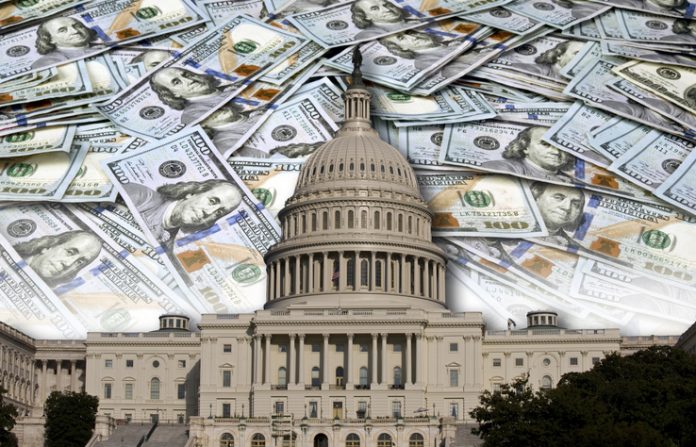Legislators and the public tend to underestimate the fiscal costs of emergency spending. Emergency supplemental bills, such as the Ukraine‐Israel foreign aid package, are often billed as one‐time, temporary costs. This framing obscures the tens of billions of dollars in interest costs generated by new deficit spending. It also ignores Congress’ increasing reliance on emergency spending to circumvent budget controls.
Without commonsense reforms, Congress is likely to continue to abuse emergency spending at the expense of the nation’s fiscal health.
The Senate recently passed a multi‐billion‐dollar foreign aid bill that provides emergency funding for Ukraine, Israel, and other objectives. Some House representatives have countered with a trimmed funding package. Any foreign aid package will face an uphill battle due to impending budget deadlines, skepticism over the necessity of additional funding, and demands that foreign aid spending be tied to tighter southern border control.
What these conversations miss is that the cost of these bills extends far beyond the perceived one‐ or two‐year funding timeline. In a high‐interest rate environment, the long‐term costs of new emergency deficit spending are many billions higher than legislators or the public might think.
The US faces a mounting fiscal challenge, primarily driven by automatic entitlement spending that most legislators refuse to touch. Casual emergency deficit spending is symptomatic of the bigger problem: Washington remains mired in myopic budget thinking. Congress should adopt prudent, forward‐thinking budget reforms, such as more accurate legislative cost‐scoring and emergency spending controls.
Short‐term Interest Costs of “Temporary” Emergency Spending
The Senate’s stated foreign aid bill cost is $95 billion. We can use a Congressional Budget Office (CBO) tool to estimate the debt‐service costs of new deficit spending based on CBO’s interest rate projections. Assuming all $95 billion is spent in fiscal year (FY) 2024, the debt‐service costs over the next 10 years are $41 billion. In total, the bill will really cost $136 billion over the next decade.
The stated cost of the trimmed House’s foreign aid package is $66 billion. Under the same assumptions, debt service costs over the next 10 years are $28 billion. That’s $95 billion over the next 10 years—the same as the advertised cost of the Senate package.
Emergency spending, such as the two foreign aid packages outlined above, is almost always deficit spending and does not follow normal budget protocols. As a result, emergency deficit spending tends to increase interest costs over the long term. According to CBO projections, interest costs are projected to grow by 87 percent in the next 10 years. In FY 2024, interest costs will exceed all defense spending.
If legislators engage in more casual deficit spending, they will directly contribute to the debt problem now by digging the fiscal hole even deeper. For decades, Washington enjoyed cheap borrowing thanks to low‐interest rates. Now, thanks to excessive pandemic emergency spending, the situation has radically changed.
Despite a fundamentally different interest rate dynamic, some lawmakers appear intent on continuing deficit spending as usual. Continuing prior Congresses’ spending‐prone behaviors would be brash and place a significant burden on current and future taxpayers who are on the hook for elevated federal debt.
Emergency Budget Reform Is Commonsense Fiscal Policy
These two reforms would help to address irresponsible emergency spending. First, legislators should require CBO to include projected interest costs in legislative cost estimates. This would more accurately reflect the cost of new deficit spending while also reducing reliance on costly gimmicky budget tricks. One such gimmick, called “spend now, save later,” involves offsetting new spending with uncertain, future spending cuts or revenue increases. Since these savings are delayed until the end of the 10‐year budget window, legislators do not fully offset the impact of new deficit spending and associated interest costs.
Second, legislators should implement an offsetting mechanism to track and pay for emergency spending including interest costs. Such a budgeting mechanism would incentivize long‐term fiscal planning while granting legislators the flexibility to respond to crises without immediate offsets if necessary. As it stands, there is no shortage of ideas on how to make sure new emergency aid is paid for.
Any responsible family would account for the upfront costs of the loan for their home along with monthly mortgage payments in their budget plan. Likewise, legislators should offset emergency spending and associated interest costs when making fiscal decisions for the entire nation.
Originally published by the Cato Institute. Republished with permission under a Creative Commons Attribution-NonCommercial-ShareAlike 4.0 International License.
For more from Budget & Tax News.
For more public policy from The Heartland Institute.











